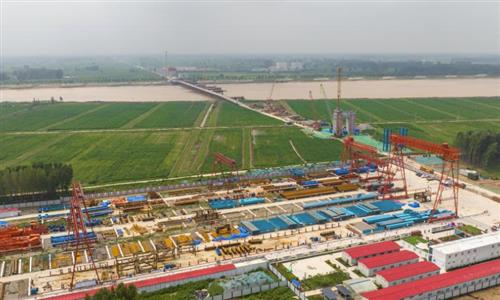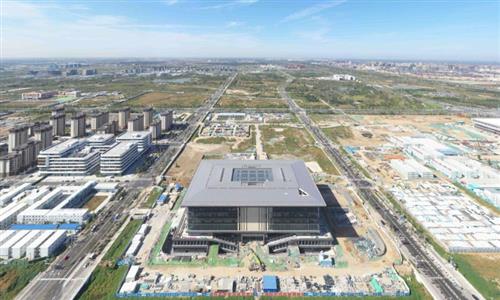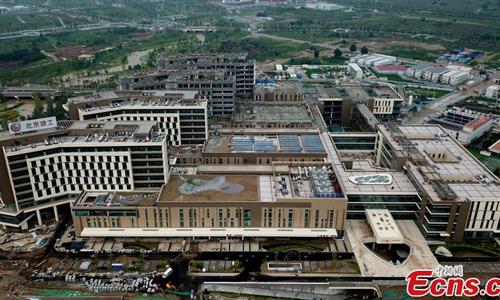
A bird flies over Baiyangdian Lake in Xiong'an New Area, north China's Hebei Province, July 19, 2023. Photo:Xinhua
China will boost the coordinated development of the Beijing-Tianjin-Hebei region to a new level, an official of the National Development and Reform Commission (NDRC), the top economic planner, said on Tuesday.
Great progress on the region's coordinated development, particularly in key areas such as transportation and environmental protection, has been evident over the past decade, with the region building itself into a world-class urban cluster, government officials and experts said.
Transportation, the ecology and industry are the three key areas for breakthroughs under the Beijing-Tianjin-Hebei coordinated development plan. Achievements have been made in all three sectors over the past decade, Guo Lanfeng, an official of the NDRC, said at the press conference.
For example, the construction of an integrated transportation network is accelerating, with the basic formation of a 60- to 90-minute transportation circle around major cities in the region.
The effectiveness of ecological collaborative governance is also evident, with the regional level of PM2.5 (small particulate matter) decreasing by nearly 60 percent from 2014 to 2023, according to Guo.
Last year, the region's GDP totaled 10.4 trillion yuan ($1.44 trillion), or 1.9 times the level of 2013 at current prices.
Coordinated development has greatly facilitated the regional transportation network. As of the end of 2023, the total length of the high-speed rail system in the region reached 2,576 kilometers, with all prefecture-level cities covered by the rail network.
Development is also bustling in the Xiong'an New Area, a pivotal region spearheading the coordinated growth of the area, envisioned as "the city of the future."
The starting point and focal point of the region's coordinated development is the migration of non-capital functions from Beijing, addressing "mega city issues" including excessive population growth, heavy pressure on the environment, high housing prices and difficulty in social management, Guo said.
Such issues have been addressed over the past decade. For example, with coordinated development in place, Beijing's population has remained stable at around 21 million in the past few years.
Other issues such as traffic congestion in the capital have also been alleviated significantly, said Guo.
Guo said that more efforts will be made to promote high-quality development in the key areas while building a world-class urban cluster, centered around the capital.
The achievements of the region's coordinated development reflect strong policy support, especially in key sectors such as economic scale and environmental development, Li Chang'an, a professor at the Academy of China Open Economy Studies at the University of International Business and Economics, told the Global Times on Tuesday.
The core of the region's coordinated development is about alleviating issues that Beijing faces while helping drive the integrated development of the bigger region, Ye Tanglin, a city planning expert with the Capital University of Economics and Business, told the Global Times on Tuesday.
Regional development also helps build a world-class agglomeration, experts said.
"The Yangtze River Delta region, centered on and around Shanghai, can be considered a world-class city cluster, but we need more areas like this to gain international influence while balancing the economic gap between the north and the south of China," Ye said.



